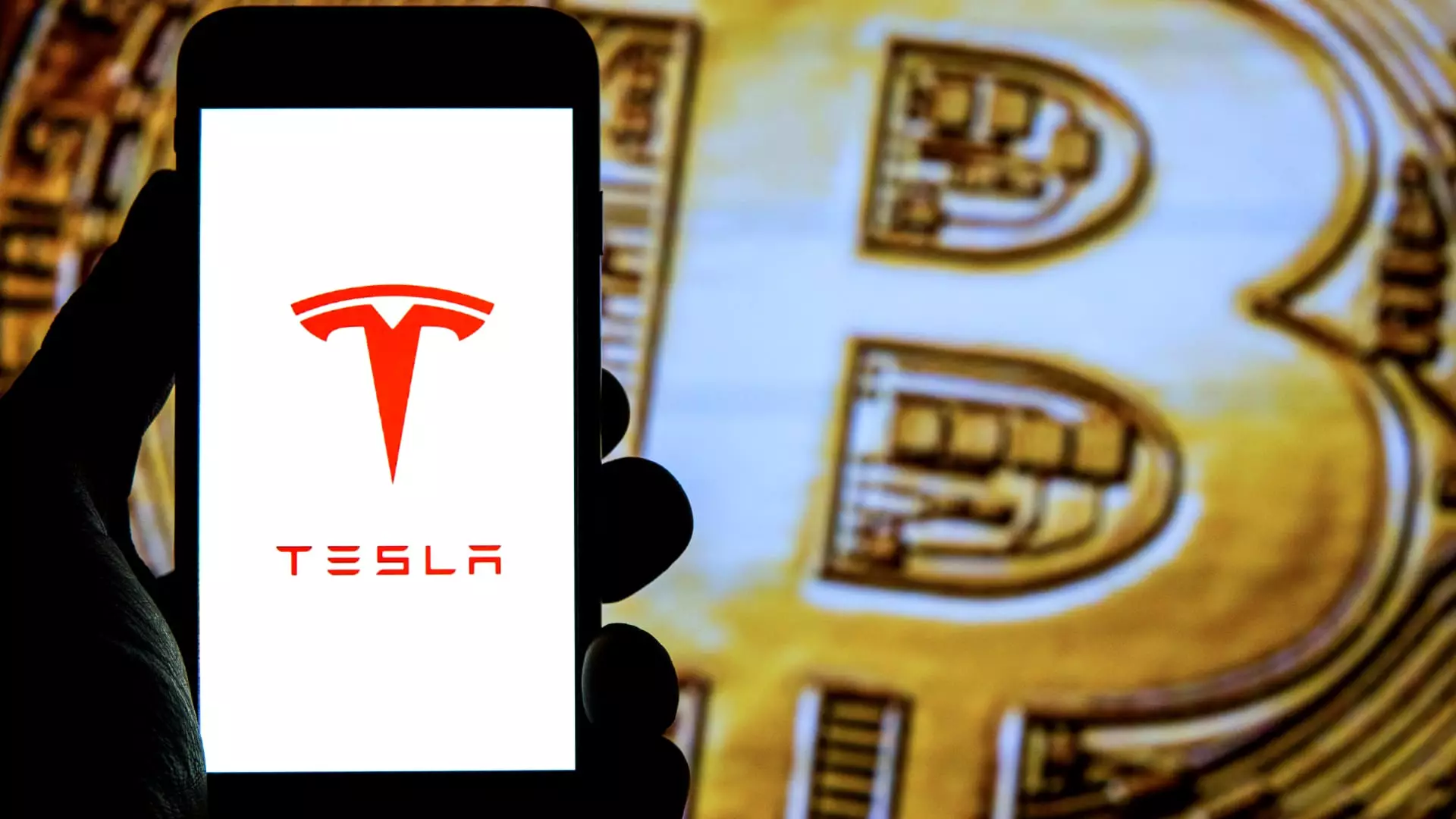Despite its reputation as an innovative trailblazer, Tesla’s recent financial disclosures reveal a troubling pattern of missed opportunities and strategic miscalculations. The company’s quarterly earnings, which fell short of analyst expectations, underscore an underlying vulnerability: Tesla’s core automotive business is faltering amidst mounting external pressures. The decline in auto revenue for two consecutive quarters, coupled with a significant stock price plunge, paints a picture of a company that is losing momentum. While Elon Musk’s ambitious ventures into robotaxis and humanoid robots seem aspirational, they are also highly speculative and costly bets that may distract from stabilizing the company’s income streams.
What’s perhaps more concerning is Tesla’s apparent disregard for its own digital assets—a treasure trove that could bolster its financial resilience. Valued at over a billion dollars, Tesla’s bitcoin holdings have appreciated sharply over the past year, soaring from $722 million to around $1.24 billion. Yet, this figure vastly underrepresents what could have been. Had Tesla held onto all its Bitcoin from early 2021, its holdings might be worth nearly four times that, amounting to over $5 billion. Instead, a significant portion was liquidated at a less advantageous time, shredded in the whirlwind of a turbulent market climate that once saw Bitcoin’s price plummet alongside Tesla’s stock last year.
Tesla’s approach to crypto-investment exposes a broader oversight: the company treated Bitcoin more as a speculation than a strategic hedge or a long-term asset. This sedate, short-term perspective cost Elon Musk and Tesla billions in potential gains—missed opportunities that could have fortified Tesla’s finances during a period of volatility and uncertainty. The silence from Musk regarding Bitcoin in recent years indicates that corporate leadership may have shifted away from considering this digital asset as part of their long-term strategic planning, a mistake that could cost them dearly as cryptocurrency markets rebuild.
The Illusion of Diversification and the Cost of Ignorance
Tesla’s investment in Bitcoin seemed promising initially, a diversification move aligned with the company’s innovative persona. Musk’s vocal support for Bitcoin in early 2021 boosted the currency’s price, and Tesla’s early investments appeared to affirm their belief in its potential. However, the decision to sell 75% of their holdings in mid-2022—at a markedly lower point—highlighted the company’s misjudgment of market timing. While fears of inflation and rising interest rates prompted many investors to abandon risky assets, Tesla’s retreat from crypto, rather than doubling down, left billions of dollars on the table.
By opting to prioritize cash liquidity amid market downturns, Tesla may have lost sight of a key advantage: owning an appreciating digital asset that could have served as a hedge against inflation and market fear. The company’s failure to maintain its Bitcoin holdings reflects a shortsighted risk aversion that contrasts starkly with the innovative risk-taking that’s defined Tesla’s brand. The missed potential is crystal clear—a strategic failure by leadership to grasp or leverage the full scope of their assets.
Furthermore, this situation underscores a larger issue prevalent among major corporations—an underestimation of digital assets’ long-term value and mainstream viability. Tesla’s focus on short-term financial metrics rather than embracing emerging markets and diversifying its financial positioning reveals a cautiousness that could cost it significantly in the future.
Market Reality and the Future of Tesla’s Capital Strategy
Tesla’s current struggles with its core auto business reflect a broader industry challenge exacerbated by legislative and economic headwinds. Tariffs, waning federal incentives, and stiff competition threaten to erode Tesla’s dominance unless the company innovates and stabilizes its revenue streams. While Musk’s investments in humanoid robots and robotaxis are forward-looking, they do not provide an immediate financial buffer or growth engine on the scale necessary to weather current storms.
In this context, Tesla’s digital assets represent an overlooked yet crucial component of its overall valuation. The disparity between their current valuation and the potential they hold is a stark reminder of how strategic oversight and timing can dramatically influence corporate fortunes. The opportunity cost of ignoring its Bitcoin holdings—an asset appreciating rapidly—might be greater than the company’s market cap decline suggests.
Tesla’s sliding stock price and declining market cap serve as both a warning and an indictment of its current strategic stance. As the world moves toward a new era of digital finance and cryptocurrencies gain acceptance, Tesla’s silence and inaction regarding their crypto holdings could evolve into a costly blind spot. The question remains: will Tesla recognize the genius of holding onto its assets or continue to see digital currencies as secondary to their traditional business models?


Leave a Reply